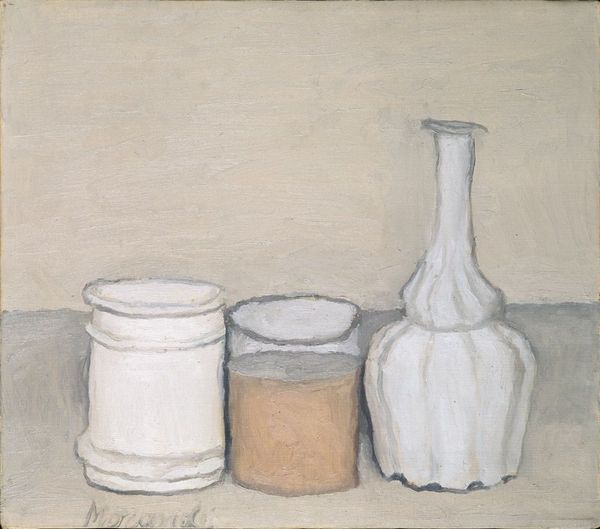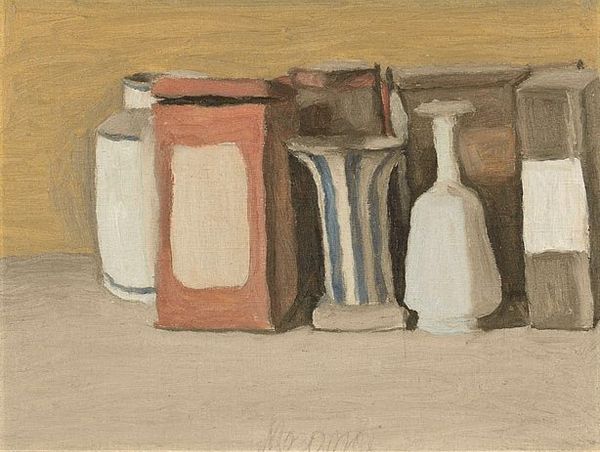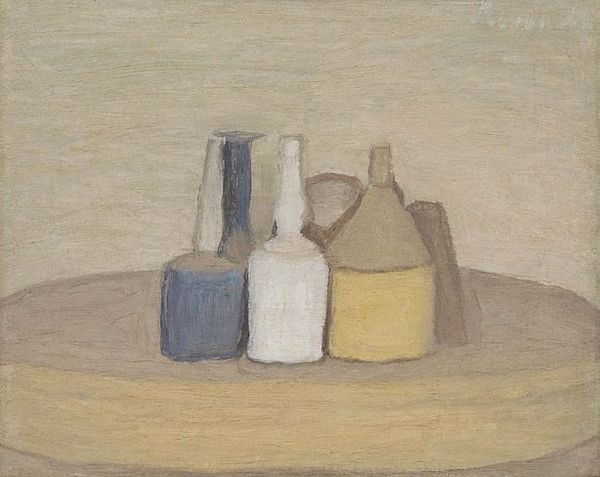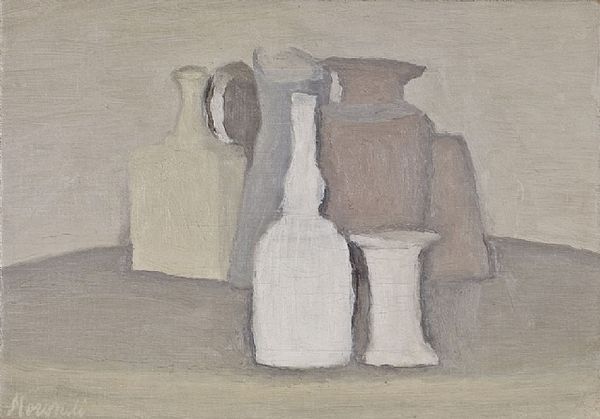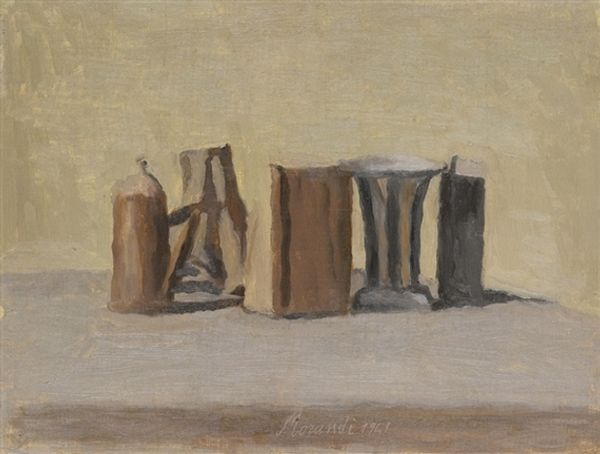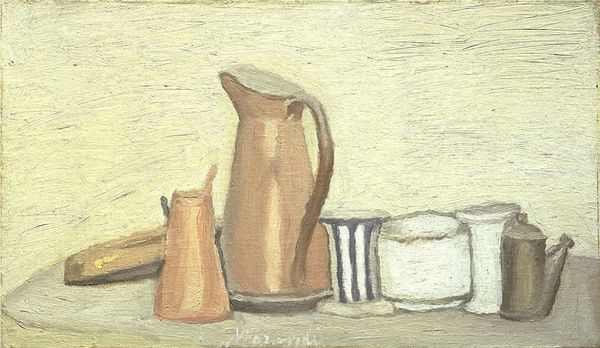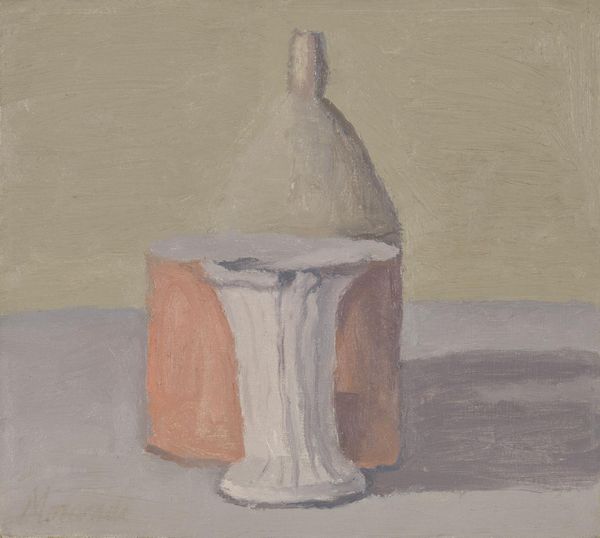
painting, oil-paint
#
painting
#
oil-paint
#
geometric
#
abstraction
#
italian-renaissance
#
modernism
Dimensions: overall: 35.6 x 45.4 cm (14 x 17 7/8 in.) framed: 52.1 x 62.2 x 4.1 cm (20 1/2 x 24 1/2 x 1 5/8 in.)
Copyright: National Gallery of Art: CC0 1.0
Editor: So, here we have Giorgio Morandi's "Still Life," painted around 1949, using oil on canvas. It's...quiet. The colors are muted, and the composition feels very formal, almost like a lineup. What do you see in this piece that maybe I'm missing? Curator: I see a rebellion against the spectacle of post-war consumerism. Morandi, working in Italy amidst immense social and political change, offers a counter-narrative. What appear as simple bottles and boxes become metaphors for the individual resisting the homogenization of identity. How do these objects speak to you about intimacy versus anonymity? Editor: Intimacy versus anonymity... interesting. I guess the repetition and slight variations in shape and color suggest a community, but one where individuality is still present? Curator: Precisely. Think about the Italian Renaissance and its emphasis on humanism. Morandi seems to be revisiting those themes in a modern context. The limited palette could also be read as a critique of the overabundance and waste that capitalism promotes. Do you find any connections to feminist ideas of domesticity and the devaluation of the everyday? Editor: I hadn’t thought of it that way, but focusing on these mundane objects, elevating them to art, could be a commentary on the value, or lack thereof, placed on domestic labor traditionally done by women. Curator: Exactly! By engaging with philosophy and cultural studies, we can look past the surface simplicity. Are the "boxes" not, perhaps, stand-ins for figures—gendered, raced, classed? What stories can you imagine the objects whispering to each other when no one is looking? Editor: I like that! This has totally changed how I see Morandi. I was too focused on the "stillness" of it all. Now, I'm seeing this vibrant, subtle commentary. Curator: It’s about understanding art as an ongoing dialogue with our present realities, and its past. Thank you for opening this dialogue!
Comments
No comments
Be the first to comment and join the conversation on the ultimate creative platform.
